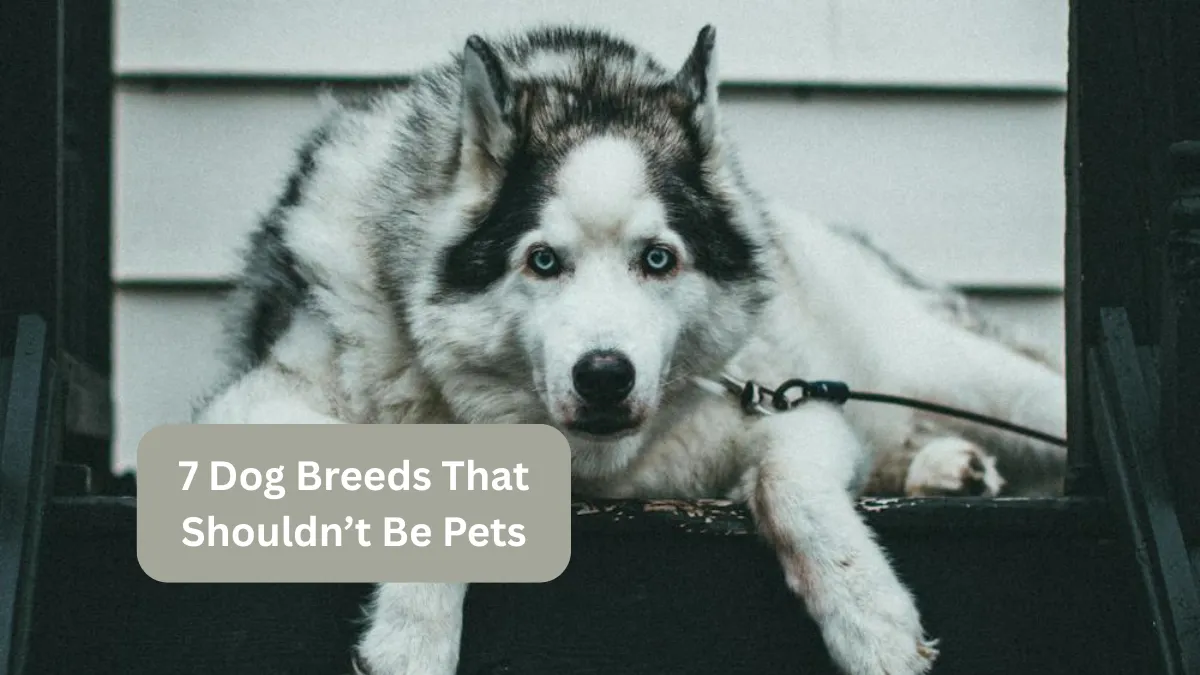While all dogs have their charm, not every breed is suited for life as a household pet. Some were bred for highly specific tasks like guarding livestock, working in extreme environments, or even hunting dangerous game. These breeds often have strong instincts, high energy, or aggressive tendencies that make them difficult—if not impossible—for the average dog owner to manage safely and happily.
Here are 7 dog breeds that shouldn’t be pets—not because they’re “bad dogs,” but because their needs often clash with typical home life.
1. Wolfdog (Wolf Hybrids)
Why Not: Unpredictable instincts, difficult to train, escape artists
Wolfdogs are part wolf, part domestic dog, and that wild heritage makes them unsuitable for most homes. They retain many wolf-like behaviors such as high prey drive, unpredictability, and a natural fear of humans. They often don’t respond well to typical obedience training and may become destructive or dangerous if misunderstood.
2. Caucasian Shepherd Dog (Caucasian Ovcharka)
Why Not: Extremely protective, highly territorial, hard to control
Originally bred to guard livestock from bears and wolves in the Caucasus Mountains, this giant breed is known for its intensity and aggression toward strangers. Without constant training and secure space, they can pose serious challenges, especially in urban or suburban homes.
3. Tosa Inu
Why Not: Banned in many countries, strong fighting instincts
The Tosa Inu was developed in Japan as a fighting dog and is incredibly powerful. While loyal to their owners, they can be aggressive toward other animals and strangers. Their sheer size and strength make them difficult to restrain without extensive training and experience.
4. Fila Brasileiro (Brazilian Mastiff)
Why Not: Naturally distrustful of strangers, very hard to socialize
The Fila Brasileiro is loyal and affectionate with its family—but highly suspicious of anyone else. Its natural aggression and tendency to bite first and ask questions later make it one of the most challenging dogs to own responsibly, especially in households with guests or children.
5. Dogo Argentino
Why Not: Strong prey drive, banned in some regions, dominant behavior
This muscular breed was originally bred for big-game hunting. While they can be gentle with their family, their strength and hunting instincts can lead to serious issues without consistent training and a firm handler. They’re not recommended for homes with small pets.
6. Perro de Presa Canario (Canary Mastiff)
Why Not: Intimidating presence, requires expert handling, aggression risk
This breed was developed for guarding and herding livestock, and has a reputation for dominant and assertive behavior. Without proper socialization, Presas can become territorial and aggressive—traits that can make them dangerous in untrained hands.
7. Boerboel
Why Not: Needs a job, overly protective, not suited for beginners
Bred in South Africa to guard homesteads from predators and intruders, the Boerboel is large, powerful, and not for novice dog owners. Their confidence and protective instincts can become problematic in homes that don’t provide firm leadership and daily structure.
Final Thoughts
None of these breeds are “bad”—they just aren’t suited for average home environments or inexperienced dog owners. Many of them thrive when given space, jobs, and proper training, often in professional or working contexts. If you’re considering a challenging breed, research thoroughly and be honest about your ability to meet their needs.
FAQs
1. Can any of these breeds be good pets with the right owner?
Yes, but they require expert training, early socialization, and firm leadership. Even then, they may never be fully reliable around strangers or small animals.
2. Are these breeds banned in some places?
Absolutely. Breeds like the Tosa Inu, Dogo Argentino, and Fila Brasileiro are banned or restricted in several countries due to safety concerns.
3. Why are these breeds still bred if they’re so dangerous?
Many serve working purposes, such as guarding livestock or property, or are kept by enthusiasts with experience handling high-drive dogs. They’re not meant for the average pet household.
4. What should someone do if they already own one of these dogs?
Seek out a certified professional dog trainer or behaviorist, and make sure your dog gets consistent training, mental stimulation, and proper containment to keep both your family and community safe.
